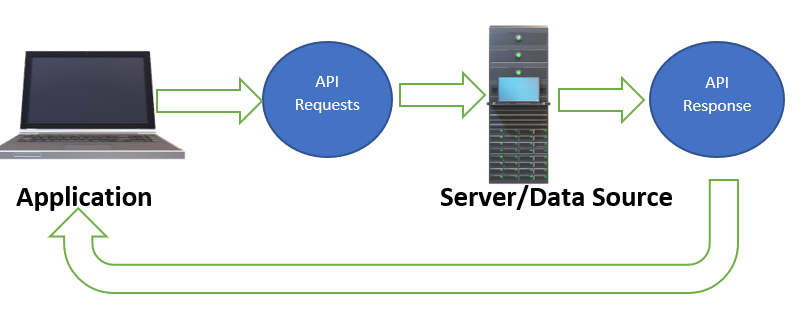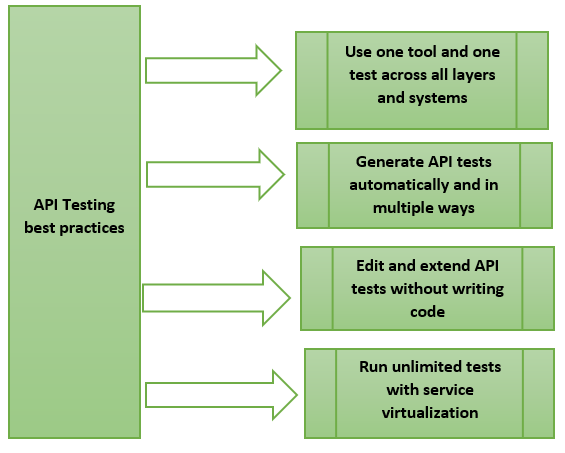API Testing Challenges and Best Practices
API Testing Overview
API is an acronym for Application Programming Interface. API testing involves testing programming interfaces directly and, as part of integration testing , to establish if expectations are met for performance, security and reliability. It legalizes the communication and data exchange between two different software systems. A software application executing an API contains functions that another system can execute.
In this article, we will highlight 2 main types of WebService APIs, Rest and SOAP. A user sends a request to the server (request is a predefined set of data sent to a server in a defined format), now when the data server receives this data, it reads/interprets it and transmits the response accordingly.
API consists of different kinds of methods like GET/PUT/POST, and there are many others; however, these three are mostly used for performing API testing.

APIs are helping software applications with day-to-day tasks and fast track data sharing, resulting in an uninterrupted interaction between internal and external applications. This improves speed and delivers business value. As more software businesses develop and integrate APIs, there are a significant number of challenges. And also, due to changes in technology, software application complexity grows multifold.
Challenges of API Testing
Testing teams are overstretched when they get to come across critical challenges during testing API implementations. Usually, API testing plays a vital role in the integration testing exercise. Following are a few of the most common difficulties in API Testing.
- Test Data Management: Conventionally UI testing is focused only on the functionality of the overall application. A tester provides input and validates the output against expected outcomes. API testing is like a doorway to data for connecting applications; hence expectations for scenarios/use cases and testing is very high in terms of speed and effectiveness.
- Impact of API Versioning: Versioning is a primary concern of rising complexity in API Testing. Most systems have a degree of depreciation, so an API should handle the versioning from old to new.
- Knowledge of Business Applications logic: APIs usually have several rules and guidelines for their usage, such as copyright policies, storage policies, rate limits, and display policies. Based on the overall business architecture logic, many business rules are defined on which APIs are developed, integrated, and used. The absence of knowledge and understanding of this business architecture logic and rules among API QA testers lead to uncertainty about the test objectives.
- Updating the API Testing Schema: The schema, in other sense, the data formatting and storage of data that contains the requests and responses for the API must be maintained throughout the testing lifecycle. Any enhancements to the program that generates added parameters for the API calls should reflect the schema configuration.
- Sequencing the API Calls: Many times, API calls need to appear in a specified sequence to work correctly. For example, if a request to return a user's profile information goes through before the user profile is created, the request will return an error. This process can get more complicated when working with multiple-threaded software applications.
- Parameter Validation: API Testers also face the problem of validating parameters sent via API requests. A large number of parameters and options for validation is an extremely difficult task. The tester needs to make sure all parameter data uses the correct string or numerical data type, fits within length restrictions, fits within a designated value range, and passes other validation criteria.
Some API Testing best practices
To beat the challenges faced by API testers, we must acquire a modern approach and set of very good tools that will empower us to automate API tests and integrate them into a continuous delivery QA cycle.

- Use one tool and one check across all layers and systems
With the correct testing framework, a tester can:
- Use the output from one test/application to the input for succeeding tests/application
- Analyze the outputs from all connecting systems gain access to a lot of features to facilitate the collaboration of testing assets and information between developers and analysts.
- Create workflows using test script/cases to mimic full business processes.
- Reuse the existing functional test cases as performance tests.
- Run multiple tests at the same time to verify functional ways and back-end APIs and services.
- Schedule tests to validate instances/environments stability.
- Generate API tests mechanically
- Building a comprehensive set of API tests is vital to ensure that your APIs can run on a reasonable level of risk.
- Start by implementing a system to capture all API requirements and change requests formally.
- Obtain all the necessary tools to auto-generate check cases and associated check scripts from these requirements and in multiple ways.
- Test cases should be kept in a central location for reuse.
- All test cases should be labelled appropriately and tagged to their original requirements.
- Edit and extend API tests while not writing code
- Test Cases which are automated by using scripts are dependent on the system under test. With the correct automation check tools and testing framework, testers will edit and extend API tests while not editing even one line of code.
- API testing is considered Blackbox testing, in which users send input and get output for verification. Automation with a data-driven approach, i.e. applying different data sets in the same test scenario, can help increase API test coverage.
- Test data and execution details can be saved along with API End Points. This makes it easier to rerun the test later.
- Choose an API testing answer with Selenium-based web UI testing and a native visual editor. With such tools, the tester will load tests developed in Selenium and scale them over multiple browsers.
- Service virtualization for simulated test environments
- With service virtualization, you'll be able to produce simulated test environments that give access to the behavior of dependent resources that are untouchable, troublesome to access, or troublesome to set up for development or testing.
- Using service virtualization, you'll be able to test an unlimited set of test cases and scenarios whenever you wish. Testers will create tests to validate all independent services and endpoints
- With the increasing attack extent of APIs, a multi-faceted security testing strategy is crucial to confirm you've designed the acceptable level of security into your application.
- Most significantly, taking advantage of service virtualization helps in creating correct test surroundings.
Conclusion:
To conclude, several API testing tools make it easy to execute and automate complex API tests. So the most appropriate tools should be chosen for testing the API of your applications. Moreover, the best practices mentioned in this article will help you make some informed decisions to implement API testing in your projects.
About the Author
Gagan Biswal, Associate Manager
Gagan Biswal is an Associate QA Manager at Jade Global. He has 12+ years of experience in Functional Testing, Integration Testing, Microsoft Dynamics, CPQ, Database Testing, ServiceNow application testing.
Comments
Post a Comment